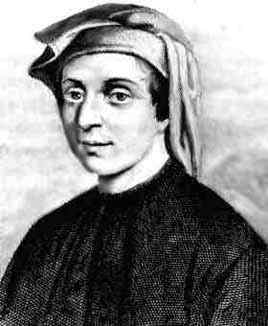Maths in a minute: N-bonacci sequences

The Fibonacci sequence is named after Leonardo Pisano Fibonacci.
Most of us have heard of the Fibonacci sequence. You start with the numbers 0 and 1 and generate subsequent terms by taking the sum of the two previous ones, giving you the infinite sequence

The 3-bonacci sequence is a variation on this. Start with the numbers 0, 0, and 1, and generate subsequent numbers by taking the sum of the three previous terms. This gives the infinite sequence

The 4-bonacci sequence starts with the numbers 0,0,0, and 1. Every subsequent number is generated by taking the sum of the four previous terms:

You can see how this can be generalised further: the  -bonacci sequence starts with
-bonacci sequence starts with  zeroes followed by a 1, with subsequent terms being generated by taking the sum of the
zeroes followed by a 1, with subsequent terms being generated by taking the sum of the  previous terms.
previous terms.
The traditional Fibonacci sequence corresponds to the 2-bonacci sequence. And the 1-bonacci sequence consists entirely of 1s.
N-bonacci constants
The Fibonacci sequence has a famous property. If you divide each term by the term that comes before it, you get a sequence of ratios:
![\[ 1/1, 2/1, 3/2, 5/3, 8/5, 13/8, 21/13, 34/21, 55/34, 89/55, 144/89,... \]](/MI/6d0ffd41242e61b1bf85cf3429e85450/images/img-0001.png) |
(This is ignoring the ratio between the first two terms because division by 0 isn't defined.) This sequence of ratios converges to the famous golden ratio,
![\[ \phi =\frac{1+\sqrt{5}}{2}=1.61803398875... \]](/MI/790c246385cd06082df2da8aacfe97ee/images/img-0001.png) |
 -bonacci sequences? The answer is "yes", and the corresponding limits are called
-bonacci sequences? The answer is "yes", and the corresponding limits are called  -bonacci constants (or sometimes
-bonacci constants (or sometimes  -anacci constants). Here are first five
-anacci constants). Here are first five  -bonacci constants:
-bonacci constants:
| N | N-bonacci constant |
| 1 | 1 |
| 2 | 1.61803... |
| 3 | 1.83928... |
| 4 | 1.92756... |
| 5 | 1.96595... |
In fact, it is possible to show that for any natural number  , the corresponding
, the corresponding  -anacci constant is a solution to the equation
-anacci constant is a solution to the equation
 |
(1) |
Such an equation always has exactly one solution which is greater than  — and that’s the solution that gives you the
— and that’s the solution that gives you the  -bonacci constant.
-bonacci constant.
The infinacci sequence
We can even talk about the infinacci sequence, for which  equals infinity. This starts with an infinite number of 0s, followed by a 1. The next term is the sum of the infinitely many initial 0s (which is 0) and 1, giving us a 1. Subsequent terms are
equals infinity. This starts with an infinite number of 0s, followed by a 1. The next term is the sum of the infinitely many initial 0s (which is 0) and 1, giving us a 1. Subsequent terms are
 |
 |
|||
 |
 |
|||
 |
 |
Continuing on like this we see that the infinacci sequence is the sequence that starts with an infinite number of 0s followed by the powers of 2!
What about the sequence of ratios of successive terms of the infinacci sequence? Does this also have a limit? Since anything divided by 0 is undefined, let’s skip the infinitely many 0s at the start and look at the ratios between successive terms of the remaining sequence. Successive terms are always of the form  and
and  for some natural number
for some natural number  , so dividing a term by the one that comes before it gives
, so dividing a term by the one that comes before it gives  for all
for all  Thus, the sequence of ratios of successive terms (starting after the initial zeroes) consists entirely of
Thus, the sequence of ratios of successive terms (starting after the initial zeroes) consists entirely of  , which means that its limit, what you might call the infinacci constant, is also equal to
, which means that its limit, what you might call the infinacci constant, is also equal to 
This fits with equation (1) above. Suppose you let the  in this equation tend to infinity. Then, as long as
in this equation tend to infinity. Then, as long as  (which we can assume as we are considering solutions greater than
(which we can assume as we are considering solutions greater than  ), the term
), the term  in the equation tends to 0. This means that the solution to the equation that is greater than
in the equation tends to 0. This means that the solution to the equation that is greater than  tends to
tends to  .
.
Finally, here's another interesting bit of information. If you know about the Fibonacci sequence then you probably know that Fibonacci came up with it while thinking of a hypothetical population of rabbits (find out more here). It has been suggested that the tribonacci sequence also has an animal connection. In On the origin of species Charles Darwin considers the growth of a population of animals based on a calculation made by his son George H. Darwin — and it has been suggested that this calculation involves the tribonacci sequence.